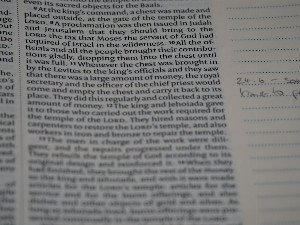Beyond the Stereotype: Unpacking the Unsung Linguistics of 'Like'
- Sciaria
- Linguistics
- Oct 02, 2025
- 0 Comments

Ah, 'like.' For decades, this seemingly innocuous four-letter word has been the linguistic punching bag of grammarians, parents, and self-appointed language guardians. Often dismissed as a marker of teenage speech, a sign of intellectual laziness, or simply 'bad English,' the truth is far more complex and fascinating. As linguists, we understand that language evolves, and 'like' isn't just surviving; it's thriving, performing a diverse array of crucial functions in modern English that are often overlooked.
One of its most prominent roles, and perhaps the most frequently maligned, is its use as a quotative. Instead of saying "she said" or "he went," speakers often use 'like' to introduce reported speech, thoughts, or even direct quotes. For example, "I was like, 'Are you serious?'" This isn't just a casual replacement; 'like' as a quotative offers a nuanced way to convey the *essence* or *attitude* of what was said, rather than a word-for-word recitation. It can even report internal thoughts, a function traditional quotatives struggle to achieve with such efficiency. This innovative usage demonstrates a dynamic adaptation of language to serve communicative needs.
Beyond quotation, 'like' functions powerfully as a discourse marker. In this capacity, it doesn't directly add semantic meaning to a sentence but rather helps to organize, frame, or soften utterances, guiding the listener through the conversation. Think of phrases like "It was like, really complicated" or "I was like, thinking about it." Here, 'like' can act as a softener, making a statement less assertive; an intensifier, emphasizing a point; or even a hedge, signaling approximation or uncertainty. It gives the speaker valuable time to formulate their thoughts, bridging gaps in speech and maintaining conversational flow.
Furthermore, 'like' frequently appears as a marker of approximation. "There were like, fifty people there," or "It's like, ten degrees warmer." In these instances, 'like' signals that the following number or description is not exact but a close estimate. This function allows for precision in imprecision, offering a useful communicative tool for conveying quantities or qualities without committing to absolute accuracy. This subtle, yet effective, use highlights its versatility as a word capable of adapting to various communicative demands, from reporting emotions to estimating figures.
So, the next time you hear 'like' in conversation, resist the urge to correct or dismiss it. Instead, consider its rich linguistic landscape. Far from being a mere 'filler word,' 'like' is a highly functional, multifaceted linguistic tool that reflects the ongoing evolution of the English language. It serves vital communicative purposes, from framing thoughts and reporting speech to signaling approximations, proving that even the most criticized words often carry the deepest linguistic secrets.
Comments (0)
Rate This Blog
Top Blogs by Rating
Beyond Repair Shops: Unlocking...
By Sciaria
Beyond the Stereotype: Unpacki...
By Sciaria
Beyond the Charts: Unlocking S...
By Sciaria
Favorite Blog
Identical Twins Aren't Identic...
By Sciaria
Beyond the Chart: The Indispen...
By Sciaria
Unseen Engineers: Nanotech's B...
By Sciaria





